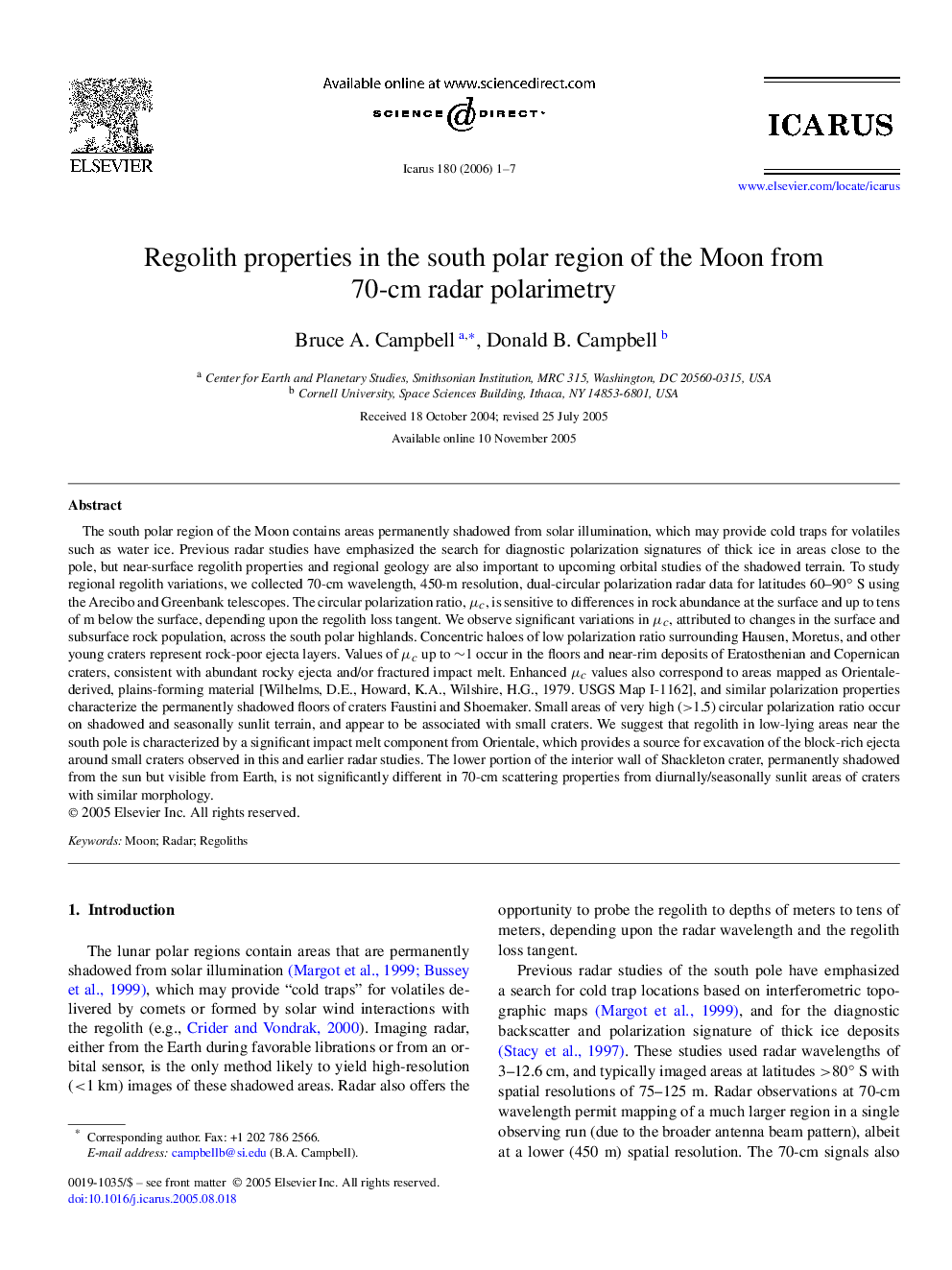| Article ID | Journal | Published Year | Pages | File Type |
|---|---|---|---|---|
| 1776014 | Icarus | 2006 | 7 Pages |
The south polar region of the Moon contains areas permanently shadowed from solar illumination, which may provide cold traps for volatiles such as water ice. Previous radar studies have emphasized the search for diagnostic polarization signatures of thick ice in areas close to the pole, but near-surface regolith properties and regional geology are also important to upcoming orbital studies of the shadowed terrain. To study regional regolith variations, we collected 70-cm wavelength, 450-m resolution, dual-circular polarization radar data for latitudes 60–90° S using the Arecibo and Greenbank telescopes. The circular polarization ratio, μcμc, is sensitive to differences in rock abundance at the surface and up to tens of m below the surface, depending upon the regolith loss tangent. We observe significant variations in μcμc, attributed to changes in the surface and subsurface rock population, across the south polar highlands. Concentric haloes of low polarization ratio surrounding Hausen, Moretus, and other young craters represent rock-poor ejecta layers. Values of μcμc up to ∼1 occur in the floors and near-rim deposits of Eratosthenian and Copernican craters, consistent with abundant rocky ejecta and/or fractured impact melt. Enhanced μcμc values also correspond to areas mapped as Orientale-derived, plains-forming material [Wilhelms, D.E., Howard, K.A., Wilshire, H.G., 1979. USGS Map I-1162], and similar polarization properties characterize the permanently shadowed floors of craters Faustini and Shoemaker. Small areas of very high (>1.5) circular polarization ratio occur on shadowed and seasonally sunlit terrain, and appear to be associated with small craters. We suggest that regolith in low-lying areas near the south pole is characterized by a significant impact melt component from Orientale, which provides a source for excavation of the block-rich ejecta around small craters observed in this and earlier radar studies. The lower portion of the interior wall of Shackleton crater, permanently shadowed from the sun but visible from Earth, is not significantly different in 70-cm scattering properties from diurnally/seasonally sunlit areas of craters with similar morphology.
